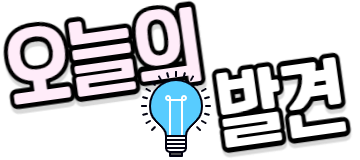The Beauty of Hanbok: A Closer Look at Korean Traditional Clothing
Today, I'd like to introduce you to a traditional Korean clothing called Hanbok. K-dramas have become extremely popular lately. Have you ever watched a historical Korean drama? Hanbok is the attire worn by the characters in those dramas. Over time, modern Hanbok has significantly evolved in terms of materials and design. If you visit Korea, you'll have the opportunity to experience wearing Hanbok, which can be a delightful and enriching activity. The text above has been translated from Korean to English and adjusted to be more easily understood by English speakers.

Definition of Hanbok
Hanbok is a traditional Korean attire worn by both men and women. It consists of a blouse (jeogori) and skirt (chima) for women, and a jacket (jeogori) and pants (baji) for men. The attire is often accessorized with a sash (gat) or hair accessory (norigae) for women and a hat (gat) for men.
Brief History of Hanbok
Hanbok has a rich history dating back to the Three Kingdoms period (57 BCE - 668 CE). The attire evolved over time, with each dynasty adding its unique style and design. During the Joseon Dynasty (1392 - 1910), Hanbok became more standardized and took on its recognizable form. Today, Hanbok remains an essential part of Korean culture, especially during weddings, holidays, and other special occasions.
Elements of Hanbok
Fabric and Colors
Hanbok is made from natural materials such as silk, cotton, and ramie. The colors used are often bright and bold, with red and blue being the most popular. Each color has a symbolic meaning, with red representing life and blue representing the sky.
Silhouette and Design
Hanbok is known for its unique silhouette, which is created by the voluminous skirt or pants and the short, fitted jacket. The design of the attire is often simple yet elegant, with minimal embellishments.
Accessories
Accessories are an essential part of Hanbok, with each accessory holding its unique significance. For women, a sash or hair accessory is worn, while men wear a hat. These accessories are often made from silk or other materials and are embroidered or adorned with intricate designs.
Types of Hanbok
Everyday Hanbok
Everyday Hanbok is the most casual form of Hanbok and is often worn by Koreans during traditional holidays and events. It is less ornate than formal Hanbok and is made from lighter fabrics.
Formal Hanbok
Formal Hanbok is worn during weddings, funerals, and other significant ceremonies. The attire is more elaborate than everyday Hanbok and often features intricate embroidery and design.
Special Occasion Hanbok
Special Occasion Hanbok is worn during significant celebrations such as the first birthday, coming of age ceremony, and weddings. The attire is often brightly colored and features ornate designs.
Significance of Hanbok
Cultural Identity
Hanbok is more than just traditional clothing; it is a symbol of Korean culture and identity. The attire represents Korea's . However, there has been a recent revival in Hanbok fashion, with many Koreans choosing to wear Hanbok on special occasions and festivals.
Hanbok around the World
Popularity in Asia
Hanbok has gained popularity in other Asian countries, especially among those who appreciate Korean culture. Many tourists visit Korea to try on Hanbok and take photos in traditional settings.
Hanbok-Inspired Fashion
Hanbok has also influenced modern fashion, with designers incorporating Hanbok elements into their designs. Hanbok-inspired clothing has been showcased on runways around the world, helping to bring Korean culture to a global audience.
Conclusion
Summary of Hanbok
Hanbok is a beautiful and essential part of Korean culture, representing Korea's rich history and cultural identity.
Importance of Preserving Cultural Traditions
As Koreans continue to embrace their heritage, it is important to preserve and promote traditional clothing and customs.
FAQs
1. Is Hanbok only worn by Koreans?
No, anyone can wear Hanbok, but it holds a special significance for Koreans as a representation of their cultural identity.
2. Can Hanbok be worn as everyday clothing?
While Hanbok can be worn as everyday clothing, it is more commonly worn during traditional events and ceremonies.
3. How has Hanbok changed over time?
Hanbok has evolved over time, with each dynasty adding its unique style and design. Today, Hanbok remains an essential part of Korean culture, especially during weddings, holidays, and other special occasions.
4. Are there different styles of Hanbok for men and women?
Yes, Hanbok for men consists of a jacket and pants, while Hanbok for women consists of a blouse and skirt.
5. Is Hanbok expensive?
The cost of Hanbok varies depending on the quality of the materials used and the level of craftsmanship. Custom-made Hanbok can be more expensive than ready-to-wear options.
5. Is Hanbok expensive?
The cost of Hanbok varies depending on the quality of the materials used and the level of craftsmanship. Custom-made Hanbok can be more expensive than ready-to-wear options.

댓글